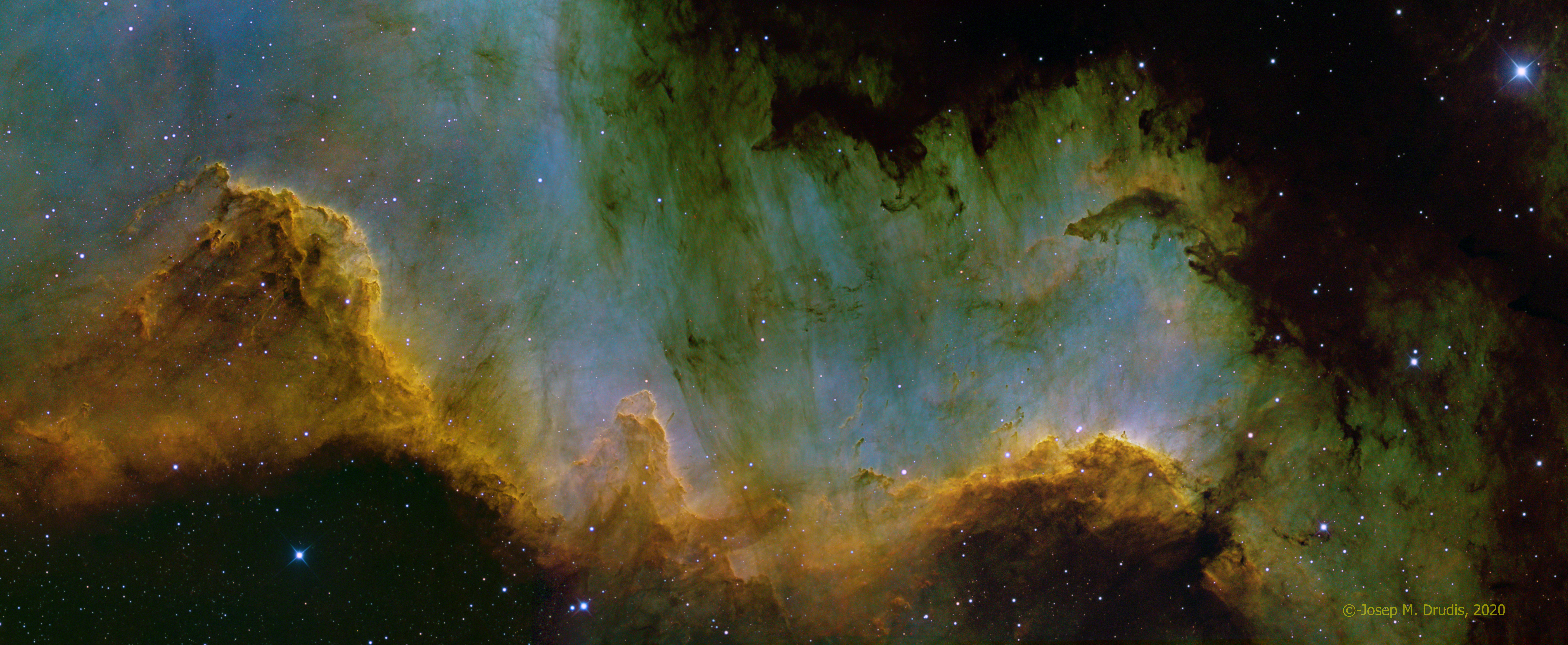Click on the image for a full resolution version
NGC 7000, also known as the North America Nebula, due to its shape, is a region of a larger nebulous system that includes the Pelican Nebula (IC 5070) as well. This fragment, a three panel mosaic, shows the region known as the Cygnus Wall, located on the Southern tip of the North America nebula. Actually, the lower part of this image would represent the Western coast of Mexico and the upper region (the dark nebulosity), the Gulf of Mexico. This region also has many Herbig Haro objects, most of them embedded in the dark nebulosity. These objects were discovered by T. Armond, B. Reipurth, et al. in 2011. Unfortunately none of them can be seen here, as they are close but outside this field of view.
This image was taken with narrowband filters (Halpha, OIII and SII) and color mapped according to a modified Hubble color palette(SII to Red, Halpha to Yellowish-green and OIII to Blue). The dark nebulosity, seen on the upper center-to-right, is catalogued in the Lynds Catalog as L935 and conforms the “Gulf of Mexico” and the large dark trench that separates this nebula from the Pelican. Very close to the center of L935 lies a very bright O3.5 star (although obscured by the nebula itself, visible magnitude 13.2) called J20555125+4352246. This star has a surface temperature of 40,000 K and is the one that fuels the emission of both NGC 7000 and IC 5070. An old wide field image of NGC 7000 can be seen here.
A second version, this time with the colors mapped according to their natural color, can be seen below.
 Click on the image for a full resolution version
Click on the image for a full resolution version
Additional Information
Object
Name(s): Cygnus Wall (fragment of NGC 7000)
Type: Emission Nebula
RA: 21h 00m 32s
Dec: +43º 35’ 39”
Constellation: Cygnus
Size (arcmin): 120×100 arcmin
Magnitude: +4
Distance: 1600 ly
Image
Date: 2020-08-25 to 2020-09-22
Location: Curiosity2 Observatory, New Mexico Skies, Mayhill, NM, USA
Size (arcmin): 69×30 arcmin
Telescope: 24” (61 cm) f/6.5 Reflector
Camera: FLI PL16803 (4096x4096pix)
Guiding: Astrodon MonsterMOAG off-axis guider
Total exposure: 80.5 hours (Ha: 30.5h; OIII: 22.5h; SII: 18.5h; RGB: 9h)
Processing: CCDStack, Photoshop CC 2020
